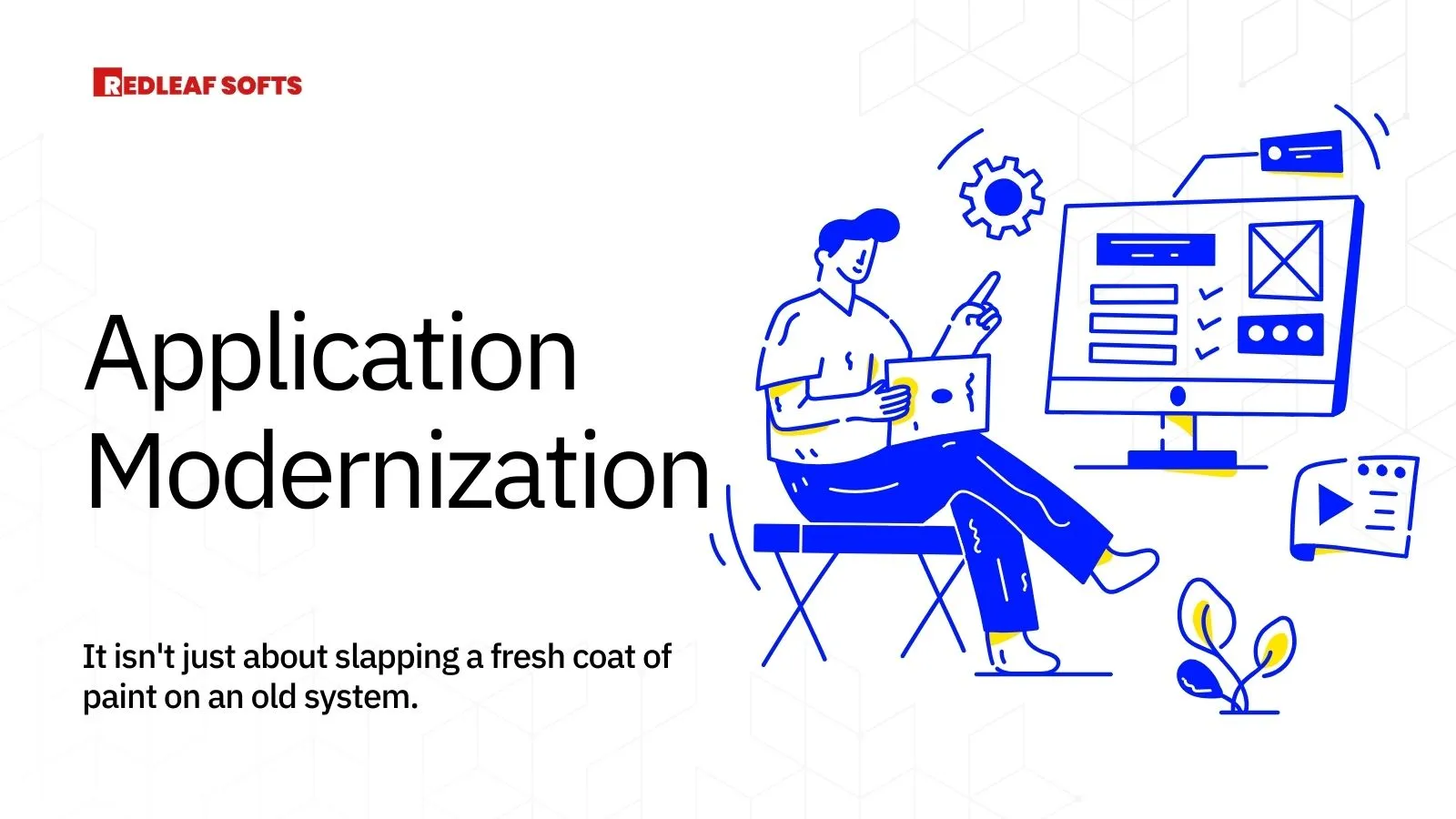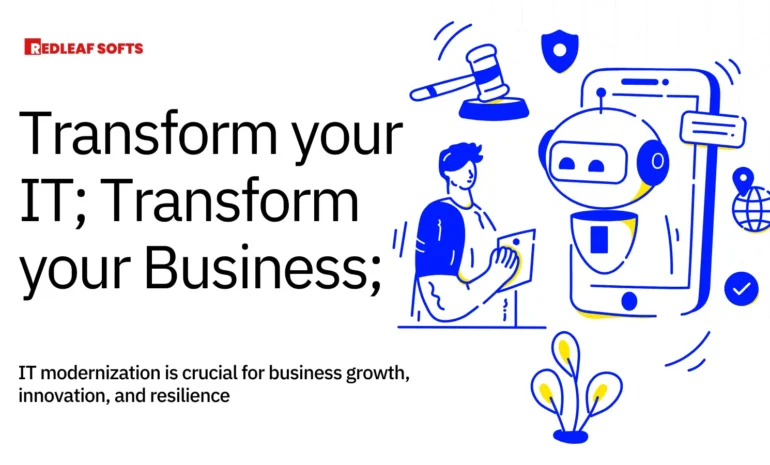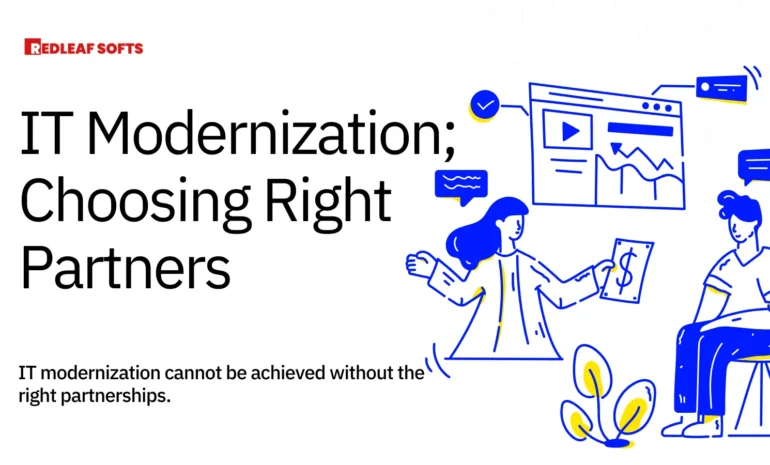Imagine a bustling bank with long lines and frustrated customers waiting for transactions that take an eternity. Paperwork piles high, and the IT team spends most of their time troubleshooting legacy systems. This was our reality just a few years ago. Our once-reliable applications, built on outdated technology, were becoming a bottleneck to growth and a barrier to delivering a seamless customer experience.
We knew something had to change. We needed to modernize our applications to keep pace with the evolving financial landscape and the ever-growing expectations of our customers. This blog post isn’t about gladiators and coliseums; it’s a practical guide, based on our experience, that explores how application modernization can transform your business:
The Pain Points of Legacy Systems:
For us, the limitations of our legacy systems were becoming increasingly apparent:
- Slow Processing and Outdated Functionality: Transactions took minutes, frustrating customers and impacting our efficiency.
- Limited Scalability: Our systems couldn’t handle the growing volume of customers and data, hindering our expansion plans.
- Integration Challenges: Connecting our legacy systems with new tools and platforms was a complex and time-consuming process.
- High Maintenance Costs: Maintaining aging infrastructure was expensive, draining resources that could be better invested in innovation.
Modernization: Your Path to Victory
Application modernization isn’t just about slapping a fresh coat of paint on an old system. It’s a strategic approach with multiple pathways, each offering unique benefits:
- Cloud Migration: Leverage the power and scalability of cloud platforms to free yourself from the limitations of on-premise infrastructure.
- Containerization: Package your applications in lightweight containers for improved portability, manageability, and scalability.
- API Integration: Break down data silos and enable seamless communication between your legacy systems and modern applications.
- Microservices Architecture: Deconstruct your monolithic applications into smaller, independent services promoting flexibility and faster deployments.
- Modernization Frameworks: Utilize tools like Spring Boot or Java EE to modernize your existing codebase and leverage modern development practices.
Choosing Your Weapons: Selecting the Right Modernization Strategy
The optimal modernization strategy depends on your specific needs and resources. Here’s a framework to guide your decision:
- Evaluate Your Existing Landscape: Thoroughly analyze your current applications, considering factors like technical debt, business value, and integration complexity.
- Define Your Goals: Be clear about your desired outcomes – increased agility, improved user experience, or cost reduction.
- Explore Your Options: Research different modernization approaches and their suitability for your specific applications and goals.
- Cost-Benefit Analysis: Weigh the benefits of each approach against the associated costs and implementation complexity.
- Phased Approach: Consider a phased implementation strategy, starting with the most critical applications and scaling progressively.
Several companies have successfully leveraged application modernization to achieve a competitive edge:
- Netflix: Their cloud-based architecture enables them to rapidly deploy new features and content, keeping users engaged.
- JPMorgan Chase: Modernizing their core banking systems has enhanced scalability and improved customer experience.
- Barclays: By migrating to the cloud, they achieved significant cost savings and improved operational efficiency.
A Roadmap for Your Modernization Journey:
- Identify Your Pain Points: Analyze your existing applications and identify the specific challenges and limitations they present.
- Define Your Goals: Be clear about what you want to achieve with modernization – faster processing, improved scalability, or a better user experience.
- Explore Your Options: Research different modernization approaches (cloud migration, microservices, etc.) and evaluate their suitability for your needs.
- Build a Business Case: Quantify the potential benefits of modernization and present a compelling case to secure leadership buy-in.
- Phased Implementation: Consider a phased approach, starting with the most critical applications and scaling progressively.
Conclusion
At RedLeaf Softs, we understand the challenges of legacy applications and the transformative power of modernization. Our team of experienced developers and IT professionals is passionate about helping businesses like yours navigate the modernization process. We offer a comprehensive suite of services, including:
- Modernization Strategy Development: We’ll work with you to assess your current application landscape, define your goals, and develop a customized modernization strategy.
- Technology Selection and Implementation: We have expertise in various modernization approaches, including cloud migration, microservices architecture, and API integration. We’ll help you select the right technologies and ensure a smooth implementation process.
- Ongoing Support and Maintenance: We understand that modernization is an ongoing journey. We offer ongoing support and maintenance services to ensure your modernized applications continue to meet your evolving needs.
Ready to unlock the potential of application modernization? Contact RedLeaf Softs today for a free consultation. Let’s work together to transform your legacy applications and empower your business for future success!


